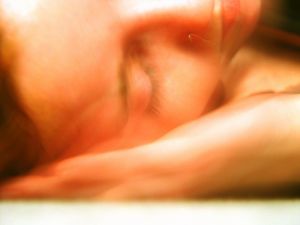Sleep Apnea 101
Sleep apnea is one of several types of sleep disorders. People who have sleep disorder sleep poorly at night because they stop breathing many times during the night.
It is associated with snoring during the night and ongoing fatigue, even when you have had a complete night’s sleep.
There are three types of sleep apnea:
• Obstructive sleep apnea. This is the most common type of sleep apnea. The throat muscles relax during sleep, blocking the air passages.
• Central sleep apnea. This happens when the brain fails to send signals to the breathing muscles and you stop sleeping.
• Complex sleep apnea. This occurs when you have a combination of central sleep apnea and obstructive sleep apnea.
Signs And Symptoms Of Sleep Apnea
The signs and symptoms of the two major types of sleep apnea often overlap so it can be hard to tell what kind of sleep apnea you have. The major signs and symptoms include the following:
• Episodes where you stop breathing during the night. Others around you can often notice the problem.
• Snoring loudly, especially in obstructive sleep apnea.
• Waking up with a headache.
• Waking up with a sore throat or a dry mouth.
• Having problems with insomnia.
• Irritability during the day.
• Problems maintaining attention during the day.
• Excessive sleepiness in the daytime.
Causes Of Sleep Apnea
If you have obstructive sleep apnea, you are usually overweight and have excessive tissue in the back of your throat that relaxes during sleep, blocking off your airway causing you to stop breathing.
The oxygen level in your blood goes down and you gasp, waking up a little and catching your breath. You usually don’t remember waking up.
This pattern can happen all night long, up to 30 times per hour or more. You don’t get enough sleep and you become tired during the day.
Because you don’t remember waking up at night, you believe you have slept well.
If you have central sleep apnea, the brain doesn’t sent enough signals to the muscles of breathing so you simply quit breathing during the night.
This can lead to having problems getting to sleep or staying sleeping throughout the night.
Risk Factors For Sleep Apnea
Sleep apnea can happen to anyone at any age, including children.
The major risk factors for developing the disorder include the following:
• Being overweight. If you are overweight, you have four times greater risk of having sleep apnea when compared to people who are of normal weight. You can still, however, have sleep apnea and not be overweight.
• Having a thicker neck. If your neck is overly thick, your airways are likely to be narrower. The doctor will measure the thickness of your neck to see if you are at risk.
• Having a narrow airway. You may have been born with an airway that is naturally too narrow. You may also have enlarged adenoids or tonsils, contributing to a narrow airway.
• Your gender. Sleep apnea is twice as common in men, although women have an increased risk following menopause.
• Your age. Older people have a greater risk of having sleep apnea.
• You have a family history. If others in the family have the disorder, you are at a higher risk.
• Using alcohol or sedatives. These things contribute to relaxation of the throat.
• Being a smoker. Smokers have a threefold risk of having sleep apnea.
• Having nasal congestion. If your nose is constantly plugged, you breathe through your mouth and this leads to having a blocked airway.
Treatment Of Sleep Apnea
If you have mild sleep apnea, you may be able to quit smoking, take allergy medication or lose weight in order to improve your symptoms.
CPAP, which stands for continuous positive airway pressure, is the main treatment for moderate to severe sleep apnea.
It is a device that is placed over your nose during sleep that delivers air to the air passages, keeping them open all the time.
That way the muscles don’t relax and you get air throughout the night.
In some cases, the CPAP does not work and you need surgery. Surgery involves removing some of the excess tissue in the back of the mouth and on the soft palate.
The uvula may also be removed as part of surgery to correct sleep apnea.
You stop snoring and you can sleep better throughout the night.
Other types of surgery for sleep apnea include repositioning the jaw or putting in plastic rods in the soft palate.
In rare cases, a tracheostomy needs to be performed, which involves putting a hole in the front of the neck for air to pass through.
People from all walks of life are able to get real answers to their pressing questions about snoring and sleep apnea in the “Stop Snoring Solutions & Sleep Apnea Guide”.
Grab your copy today if you want the safest and simplest product to stop snoring you can get your hands on in the next 3 minutes.
Join in and write your own page! It's easy to do. How? Simply click here to return to Health.

"Power Tips" magazine is back!
You Get A Free Complete Self Help Report delivered to your email box every edition, plus you get a free PLR article and other great gifts!
SUBSCRIBE BELOW ... I promise you will want to USE what you learn!
I really want to know what you think of this site, this page, and to hear your tips or suggestions about it.
So please share your story or simply add a Comment in the comment box.
If you feel that the information on this page has been useful to you please give it a Like or share it with your friends - thanks!!
"You are a life Saver!!
I recently discovered this site and I can tell you that my life has not been the same. I now come here EVERYDAY and spend at least 1 hour.
I used to spend that time browsing online fashion and beauty
magazine which just means that I spend more. Now I have replaced that
habit with coming here.
In future I will think about contributing articles as well. Thank you! Thank you!! Thank you!!! and God bless"
Contact Us | About Us | Terms of Use | Privacy Policy | FAQ | Testimonials
Amazon and the Amazon logo are trademarks of Amazon.com, Inc. or its affiliates. As an Amazon Associate I earn from qualifying purchases. Product prices and availability are accurate as of the date/time
indicated and are subject to change. Any price and availability
information displayed on [relevant Amazon Site(s), as applicable] at the
time of purchase will apply to the purchase of this product.















